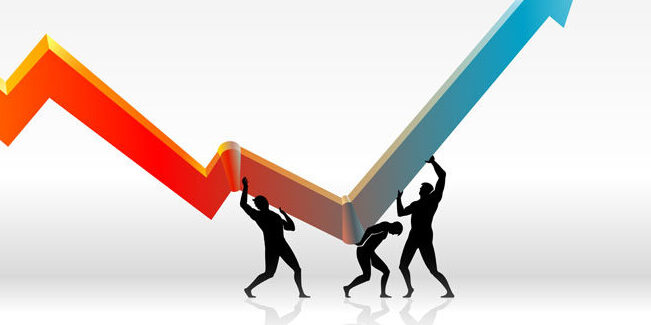
US index futures and European markets ride high since opening this morning. Sovereign bonds climbed and oil prices swing.
Macroeconomics will play a decisive role in today’s financial market business, in addition to the Russia-Ukraine war. The US employment report and the ISM Manufacturing Index will provide a testament to the health of the US economy and clues to the extent of the Federal Reserve’s (Fed) monetary tightening. At the same time, the Consumer Price Index (CPI) in the Eurozone, which set a new record, gives an idea of the damage caused by the war on purchasing power.
In this sense, there tends to be a detachment between Europe and the United States. Better data are expected for the latter, which is less energetically vulnerable and has a more resilient economy. In Europe, in addition to inflation, which has shown to be on the rise, PMI data will be released for industries in the currency bloc and for several countries on the continent, including Germany, the United Kingdom, France, and Spain.
Contracts on US equity benchmarks advanced, while the European Stoxx 600 rallied after its worst quarter since the pandemic-era bear market. This is despite eurozone inflation rising to a new all-time high.
Oil today, which had been falling, has gone up and down again. Top industry news, in addition to the release of reserves by the US, is that Russia’s Gazprom PJSC has started to tell customers how to pay for gas in rubles. Russia’s invasion is affecting global supply chains and driving up already high energy costs. Treasury yields were up: 2-year (2.39%) and 10-year (2.42%) US Treasury yield curves were close to reversing, a pattern that signals concern about an economic downturn.
Eurozone inflation (preliminary data) hit record highs in March, rising 7.5%, against projections of +6.7% and +5.9% in the previous reading. By way of comparison, the maximums reached in the last decade were +4.0% (June 2008) and +3.0% (September 2011).
The market follows the outcome of the Russian gas supply to Europe after the country asked that payment be made in rubles. With this requirement, Russia wants to sustain the value of its currency and circumvent part of the sanctions imposed on it. In addition, investors note the action of Russian military forces in Ukraine, which did not decrease as expected.
Natural gas prices in Europe fell as fears about supply disruptions stemming from Russia’s decision to change the currency of payment eased. Benchmark gas futures were down 2.9% on Friday morning, erasing previous highs.
Over the course of the war, Russia said that two Ukrainian military helicopters hit an oil deposit in the city of Belgorod, information that was not confirmed by Kyiv. Today, Russian and Ukrainian negotiators are continuing their talks, this time via videoconference.
The situation regarding maturing Russian bonds is also noteworthy. Russia repurchased the equivalent of $1.45 billion of a tranche due on Monday, or 72% of outstanding debt, which would leave just $552.4 million outstanding. So far, even with restrictions and sanctions on Russia for its attacks on Ukraine, the country has been able to honor its financial obligations.
US markets closed with losses for the second straight session, affected by concerns about the effects of the war in Ukraine on the global economy. With this performance, the main stock market indicators closed a first quarter that will not be missed. The S&P 500 is down 4.9% in three months, the worst since March 2020, when the first effects of the Covid-19 pandemic were felt. The Dow Jones Industrials lost 4.6% in the quarter, while the Nasdaq Composite plunged 9% in the period. Oil prices fell after US President Joe Biden decided to use his country’s reserves to try to contain the increase in the cost of barrels, caused by the armed conflict.